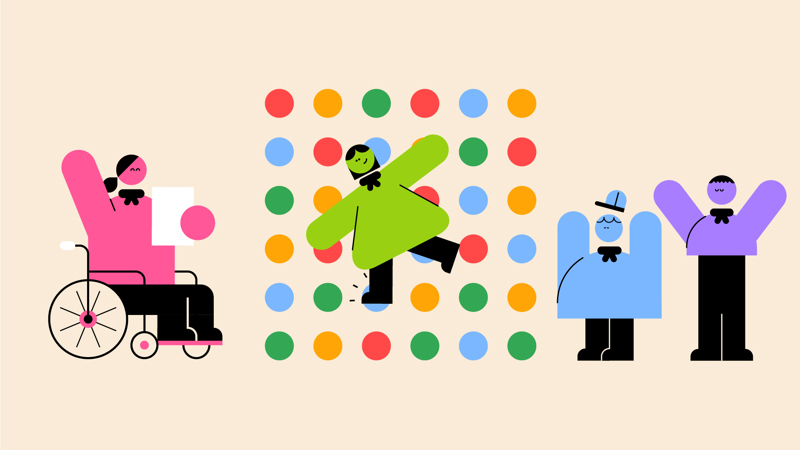
The spotty dotty road
You’ll need
- Scissors
- A4 paper
- Pens or pencils
- Stopwatch or phone
- 12 sheets of A4 coloured paper or card in four different colours
Before you begin
- Use the safety checklist to help you plan and risk assess your activity. Additional help to carry out your risk assessment, including examples can be found here. Don’t forget to make sure all young people and adults involved in the activity know how to take part safely.
- It’s up to you how you play this game. You may want to set up multiple grids (with different correct paths) so that more than one team can play at the same time. You could also have one team playing while other teams do another activity.
Prepare the road
- Get your card and scissors. Cut out three circles from each sheet of card. You should have nine circles of each colour (36 circles in total).
- Use the circles to make the dots on the spotty dotty road by placing them on the floor to make a square grid. The grid will have six rows across and six columns down.
- Take your plain paper and draw a grid of circles the same as the grid you’ve made on the floor. This is where you will draw the path that the teams must find.
- Using the guidance below, design your path on the A4 paper grid by putting a cross inside each correct dot.
- Keep this correct path hidden – it’s important that the players don’t see it as they need to guess the right steps.
The right path
- The correct path must include one dot on each horizontal row of the grid. Players must find every correct dot on the spotty dotty road – they can’t jump over a row.
- From a correct dot, the next dot must be straight above, or diagonally above to the left or right (see example grid). The people playing the game should be able to step from each correct dot to the next – they should not need to jump.
Play the game
- Divide into teams of about six players.
- The team should line up behind the first row of the spotty dotty road. Everyone should help anyone who’s new to join in.
- The first team member should step onto any dot on the first row, and wait for the person running the game to tell them whether it’s right. The person running the game will say ‘woo’ if they’ve stepped on a correct dot, or ‘whoopsie’ if they’ve stepped on an incorrect dot.
- When a player guesses a correct dot, the whole team must call the colour out loud to help remember it. The player who found the right dot keeps crossing the spotty dotty road. Their team can make suggestions about where to go next.
- When a player guesses an incorrect dot, they go to the back of the line. The next player starts to cross the road. Their team will help them to remember any correct dots the team have already found.
- Repeat steps 4 and 5 as the team makes it across the road. Make sure the teams call out the colour of the dots, to remember the path they’ve already found.
- The challenge is complete when the whole team has successfully crossed the spotty dotty road.
Reflection
Teams should reflect on their crossing, and the skills they used to find their way across. A successful crossing relies on working as a team – how did you communicate with the person in the middle of crossing the road? Did you split up the remembering between you? Did anyone do anything that was really helpful?
To get across, you also need respect and trust for others – how did you show respect when two people thought different things? Did you listen to others in your team? Did you trust other people to remember?
Safety
All activities must be safely managed. You must complete a thorough risk assessment and take appropriate steps to reduce risk. Use the safety checklist to help you plan and risk assess your activity. Always get approval for the activity, and have suitable supervision and an InTouch process.
- Active games
The game area should be free of hazards. Explain the rules of the game clearly and have a clear way to communicate that the game must stop when needed. Take a look at our guidance on running active games safely.
- Increase or decrease the number of spots used to make the road bigger or smaller.
- Increase the number of correct paths which could be used to complete the crossing.
Include symbols on the spots for those who may not recognise different colours.
All Scout activities should be inclusive and accessible.
Use the game to work on grid references, by labelling the bottom of the columns from A to F and the sides of the rows from 1 to 6. Now, team members must call out the dot’s grid reference, as well as its colour.
Add a sequence of items such as items in a story, or food in a shopping basket. Draw or stick a simple image to the back of each dot. Teams can only turn a dot over the first time they correctly stand on it, but they must remember the sequence of items.


